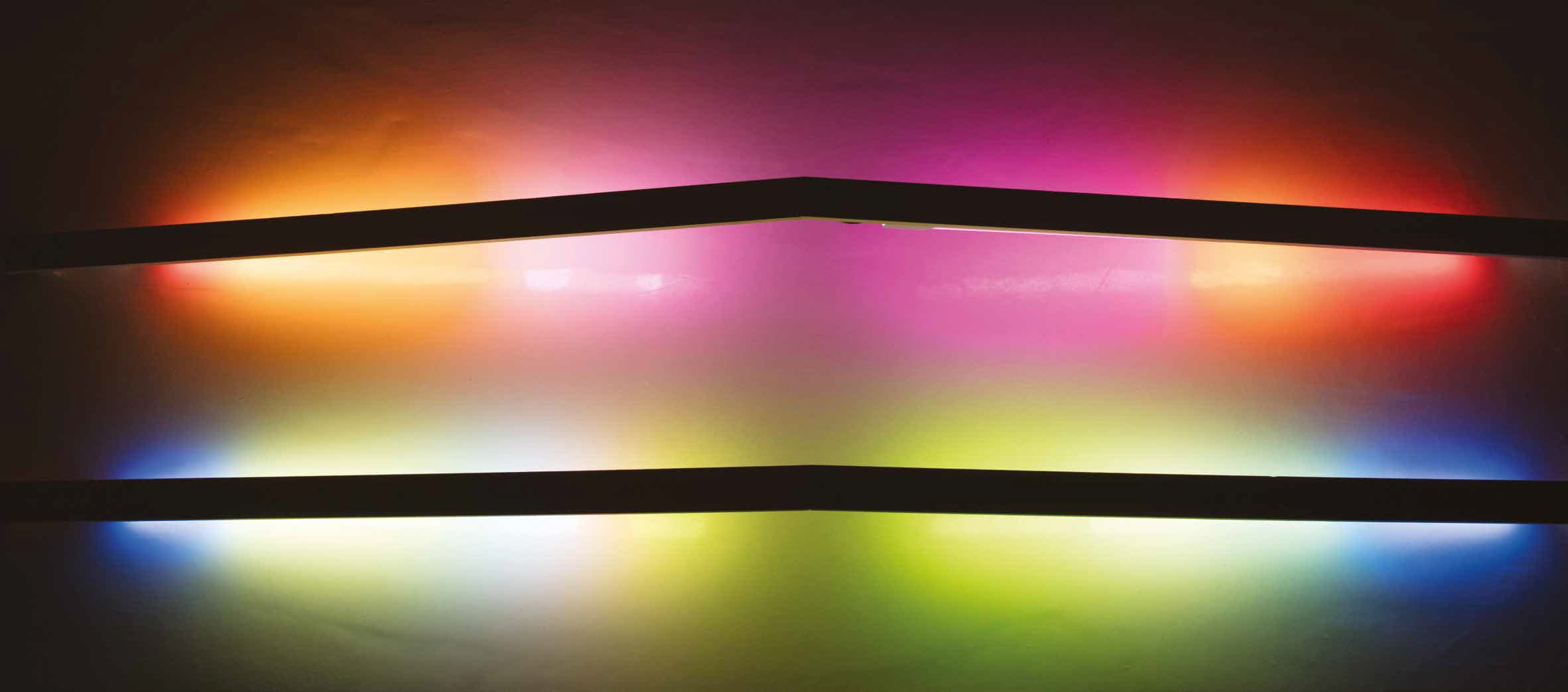Downloads
DOI:
10.31182/cubic.2022.5.49Keywords:
light art, afterimage, optical illusion, seeing, perception, experienceAbstract
Light makes our surroundings visible to us. Vision plays a substantial role in how we access our environment and make sense of it. Yet, the understanding of light vision suffers from the discrepancy between physical and perceptual facts. This contribution questions the rationale of how knowledge and truth are generated. Language may often not be adequate to activate and guide all of our senses whereas artworks, especially light art, may evoke thoughts and demonstrate experiences (of perceptual processes) that open up reflective attitudes on reality’s subjectiveness. In this essay, the original physical artwork can only be displayed as a representation. Printing light as images is in itself an experiment in knowledge production, a subjective experience. The imagery maps the light and colour effect of the artwork and invites the viewer to trace the installation’s experience as well as to try out the after-image effect and optical illusion, examining knowledge along the way.
How to Cite
Published
Issue
Section
References
Classen, Constance. Worlds of Sense: Exploring the Senses in History and Across Cultures . London: Routledge, 1993. p. 68.
Elíasson, Ólafur, and Tor Nørretranders. Light! On Light in Life and the Life in Light . Klampenborg: Forlaget Tor.dk, 2015. p. 21.
Gibson, James J. The Perception of the Visual World . Boston, MA: Houghton Mifflin Company, 1950. p. 51.
Raizman-Kedar, Yael. “Plotinus’s Conception of Unity and Multiplicity as the Root to the Medieval Distinction between Lux and Lumen”. In Studies in History and Philosophy of Science Part A 37, no. 3 (1 September 2006): pp. 379–97.
Ronchi, Vasco. The Nature of Light. An Historical Survey. London: Heinemann Educational Books, 1970. pp. 261–84.
von Goethe, Johann Wolfgang. Goethe’s Theory of Colours . London: John Murray, 1840. §57.


